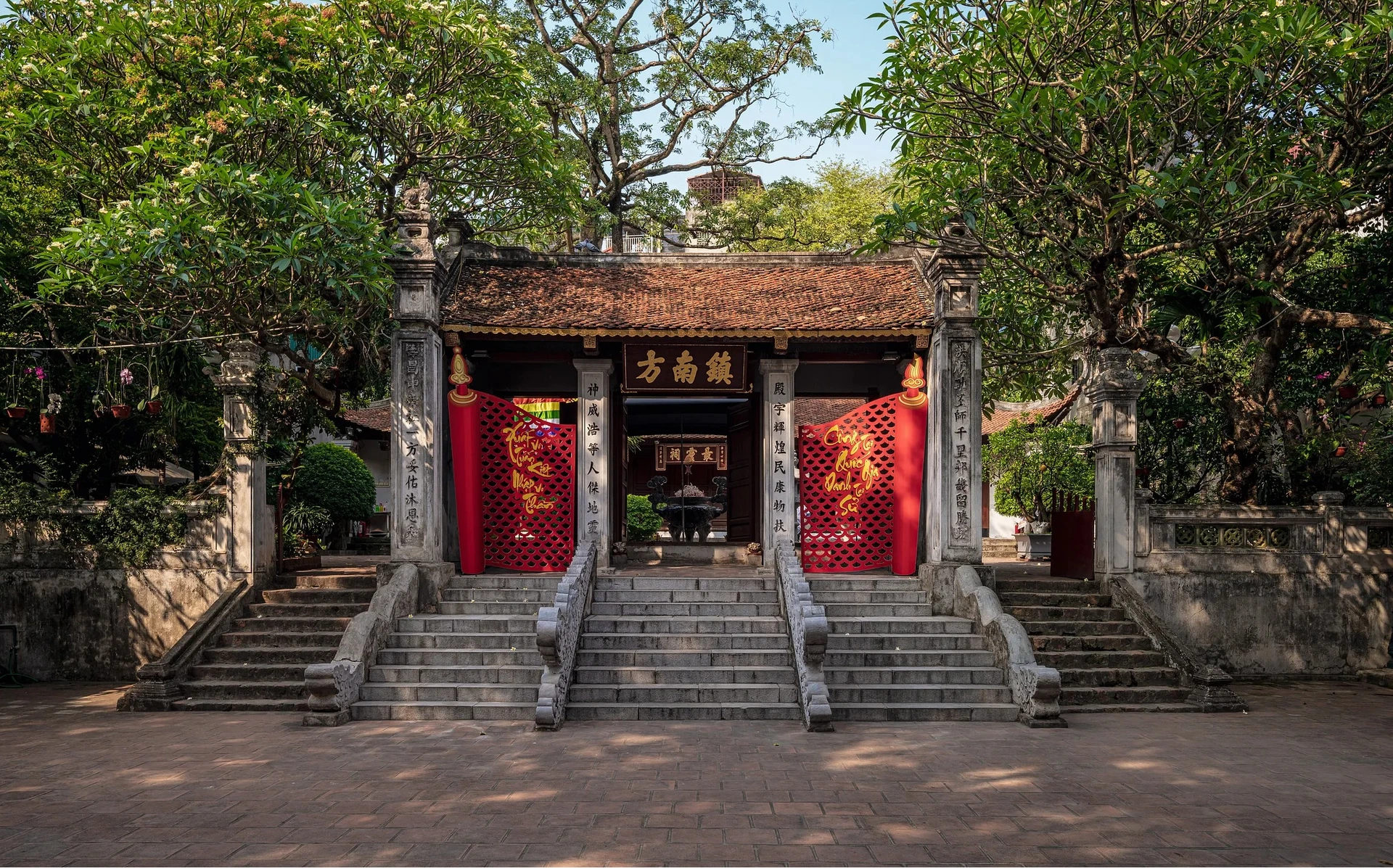Bach Ma Temple guards the East
Located in the heart of the Old Town, Bach Ma Temple is the "line of defense" guarding the east of the ancient city. Founded in the 9th century, Bach Ma Temple is considered the oldest temple of the Four Towns. The god worshipped here is the god Long Do (meaning "dragon navel"), also known as the god Bach Ma.
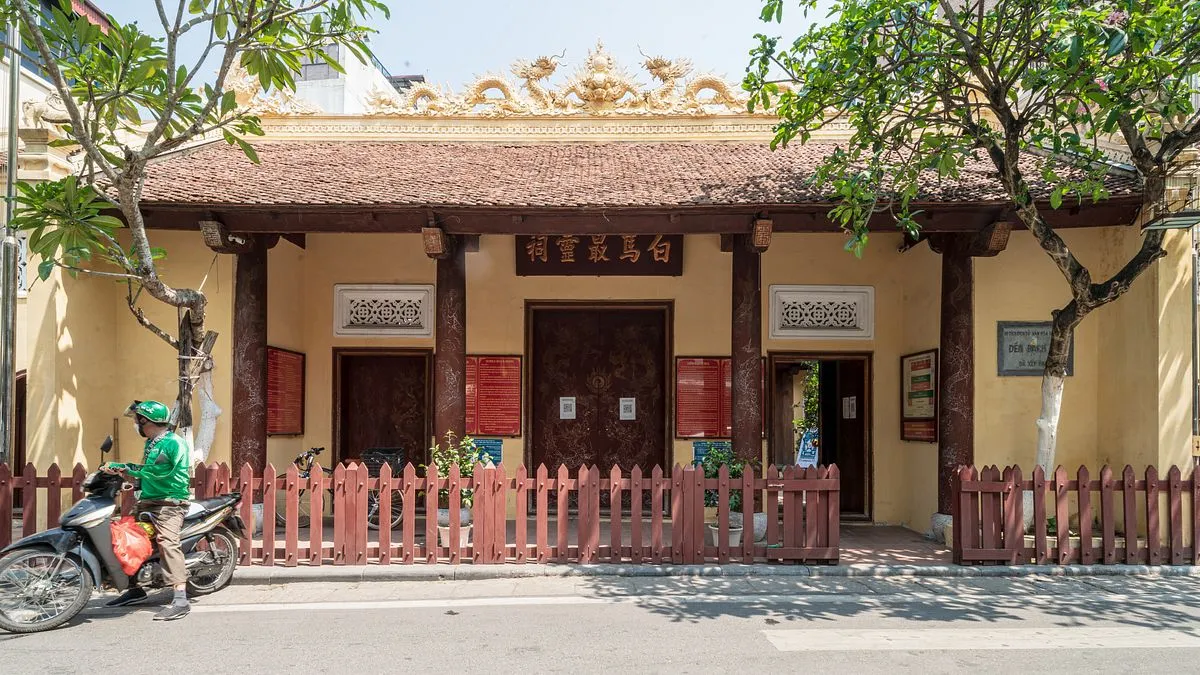
Legend has it that when the capital was moved to Thang Long in 1010, Emperor Ly Thai To expanded the citadel many times but failed. One day, he sent someone to pray to the god Long Do, and then at night, he dreamed that the god came to congratulate him and told him to build the citadel following the footprints of the white horse coming out of the temple. The king built it into the words of the gods, and wherever it is built, it will surely come there. Thanks to the above thanks, the king changed the name of the temple to Bach Ma, and named Long Do the Emperor of Thang Long Citadel.
The statue of the White Horse and the Sun symbol on the saddle pad. In Vietnam and many other cultures, the worship of the East is also the worship of the Sun.

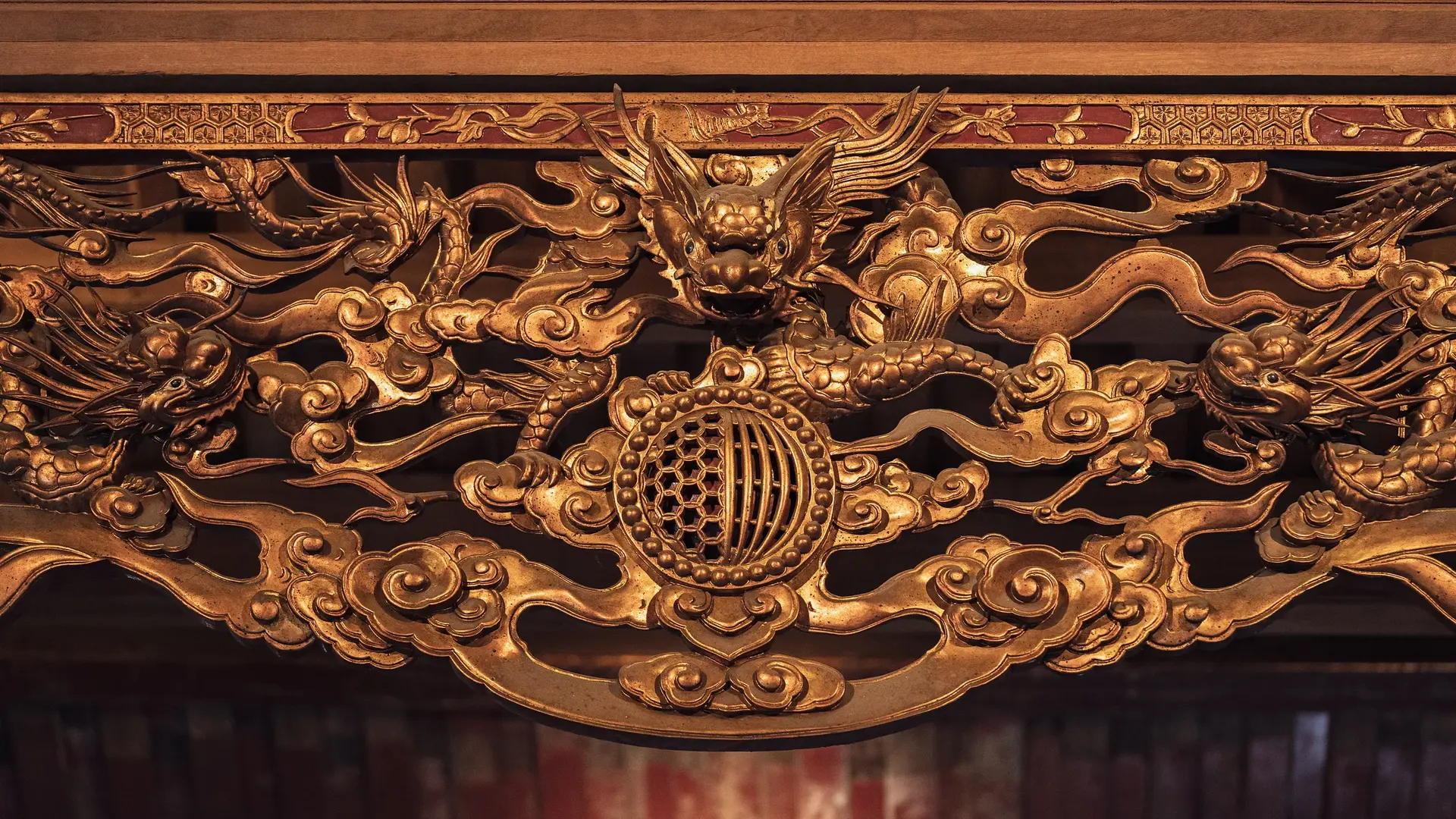
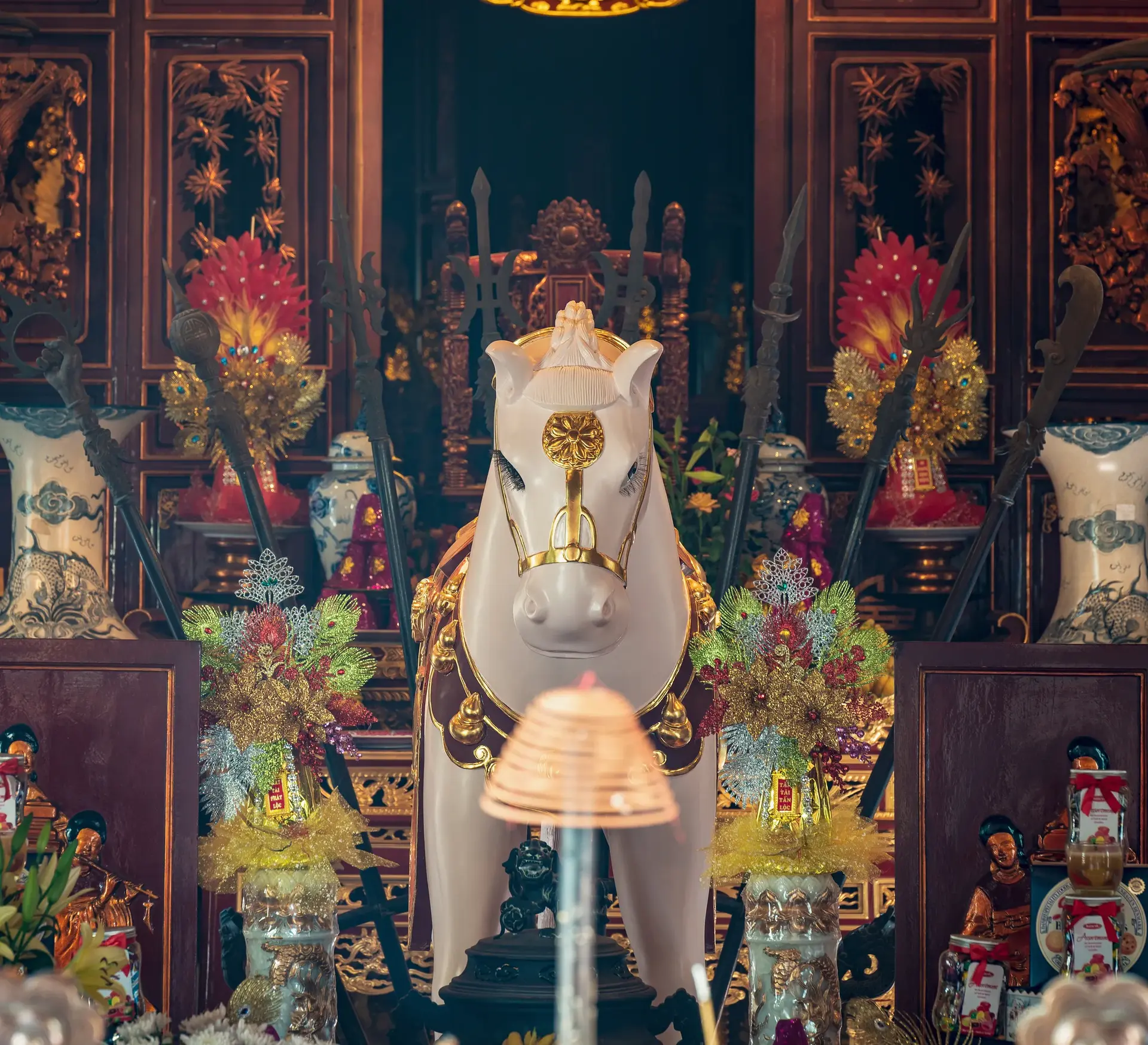
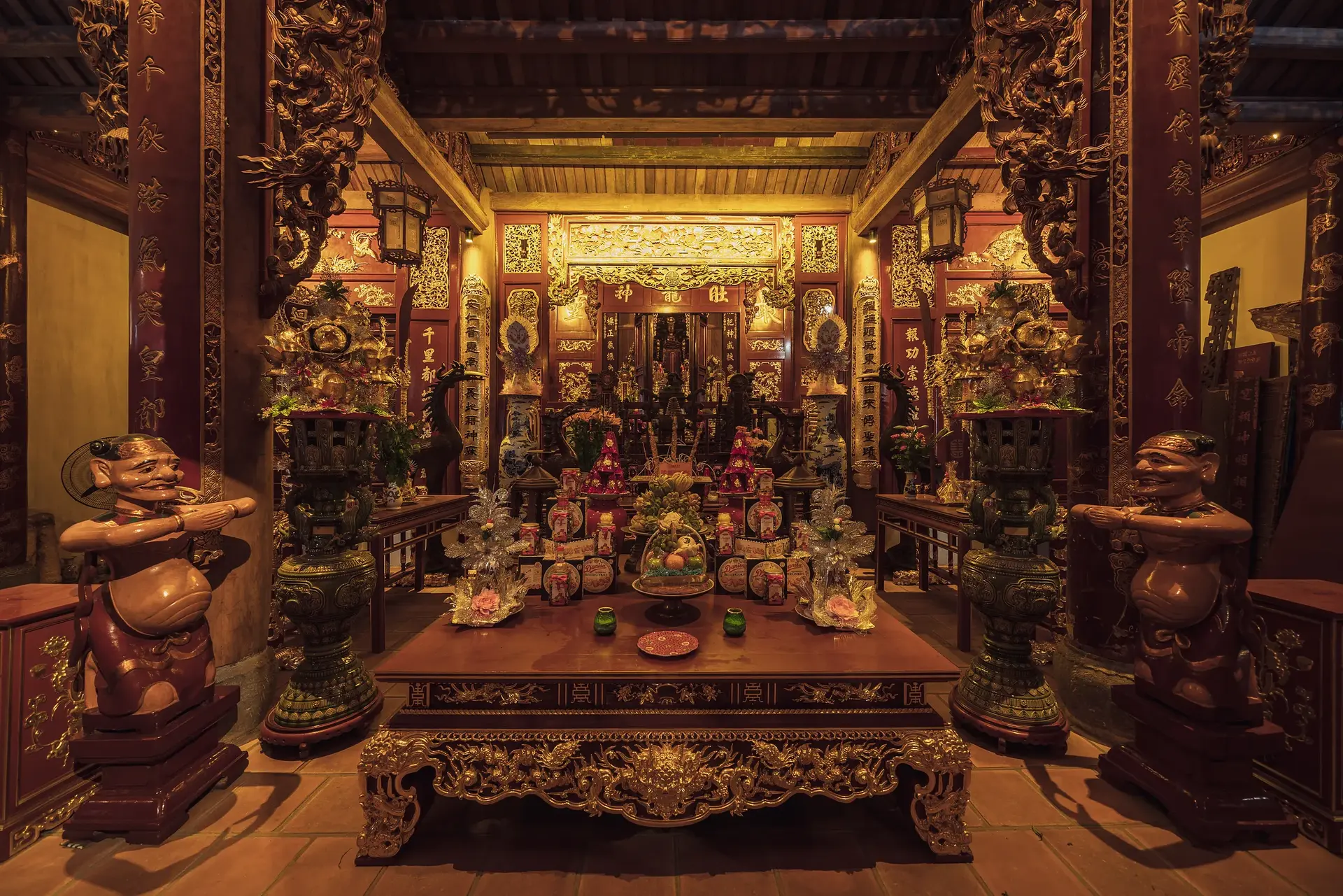
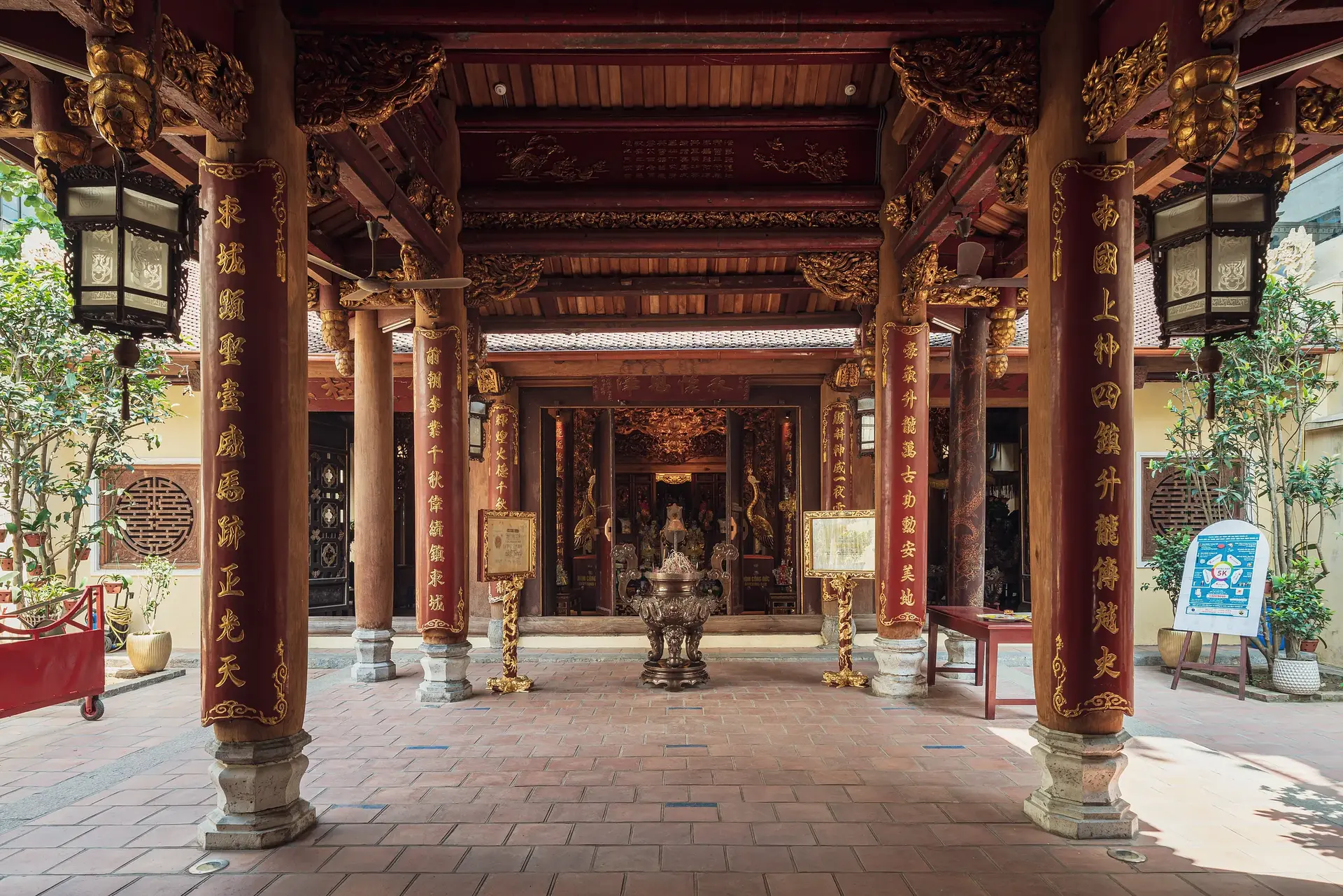
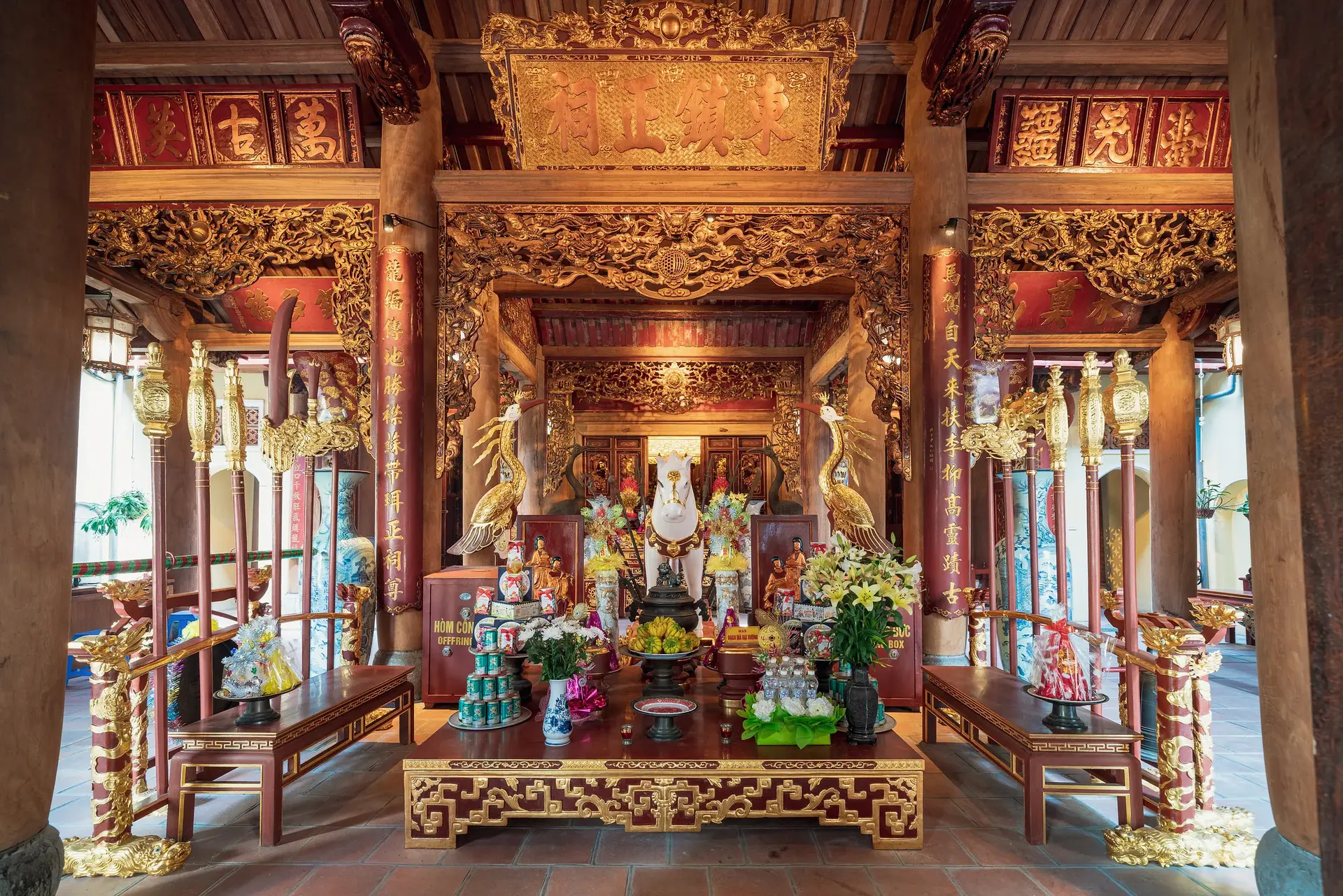
The temple has four main sections. The first is the Phuong Dinh (front yard) with ironwood columns painted with golden lipstick. Next is Dai Bai (outer communal house) which is reserved for worshipping Bach Ma, then Thien Huong (middle communal house). The innermost forbidden palace is a place to worship the god Long Do.
Kim Lien Temple holds the south
Kim Lien Temple is a sacred temple guarding the South, a place to worship the god Cao Son, one of the 100 children of the ancestors Lac Long Quan and Au Co. Following his mother's footsteps to the mountain, he helped Son Tinh defeat Thuy Tinh to bring prosperity and peace to the people.
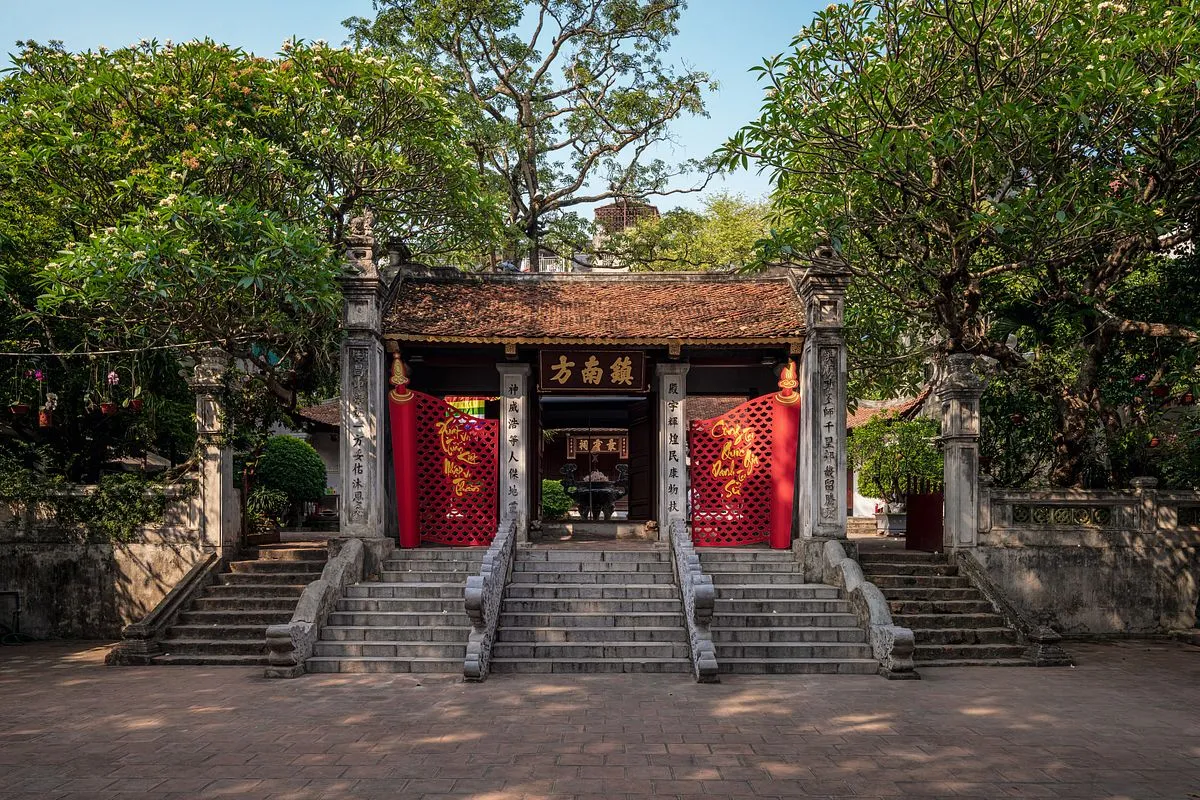
Compared to the other three temples, Kim Lien Temple is said to have been completed at the latest, in the 16th-17th centuries since it was started after the relocation of the capital. Over time, Kim Lien villagers built more triangular gates next to Kim Lien Lake. Many auxiliary works have also been built and the temple gradually doubles the function of a village communal house.
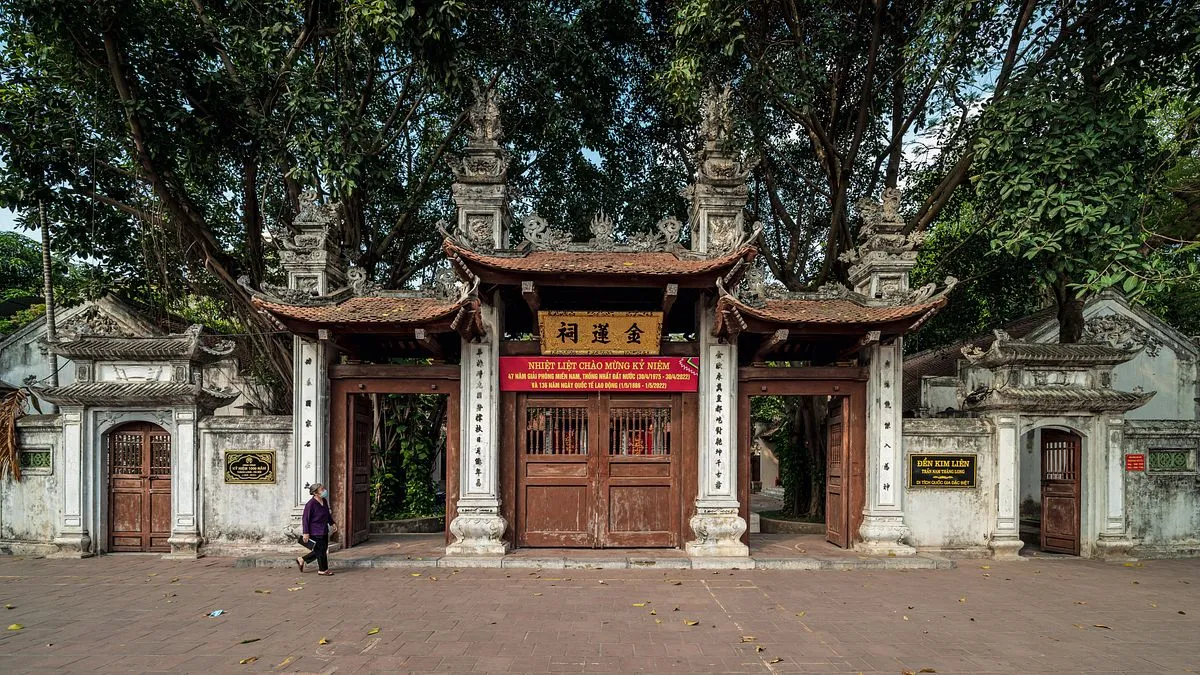
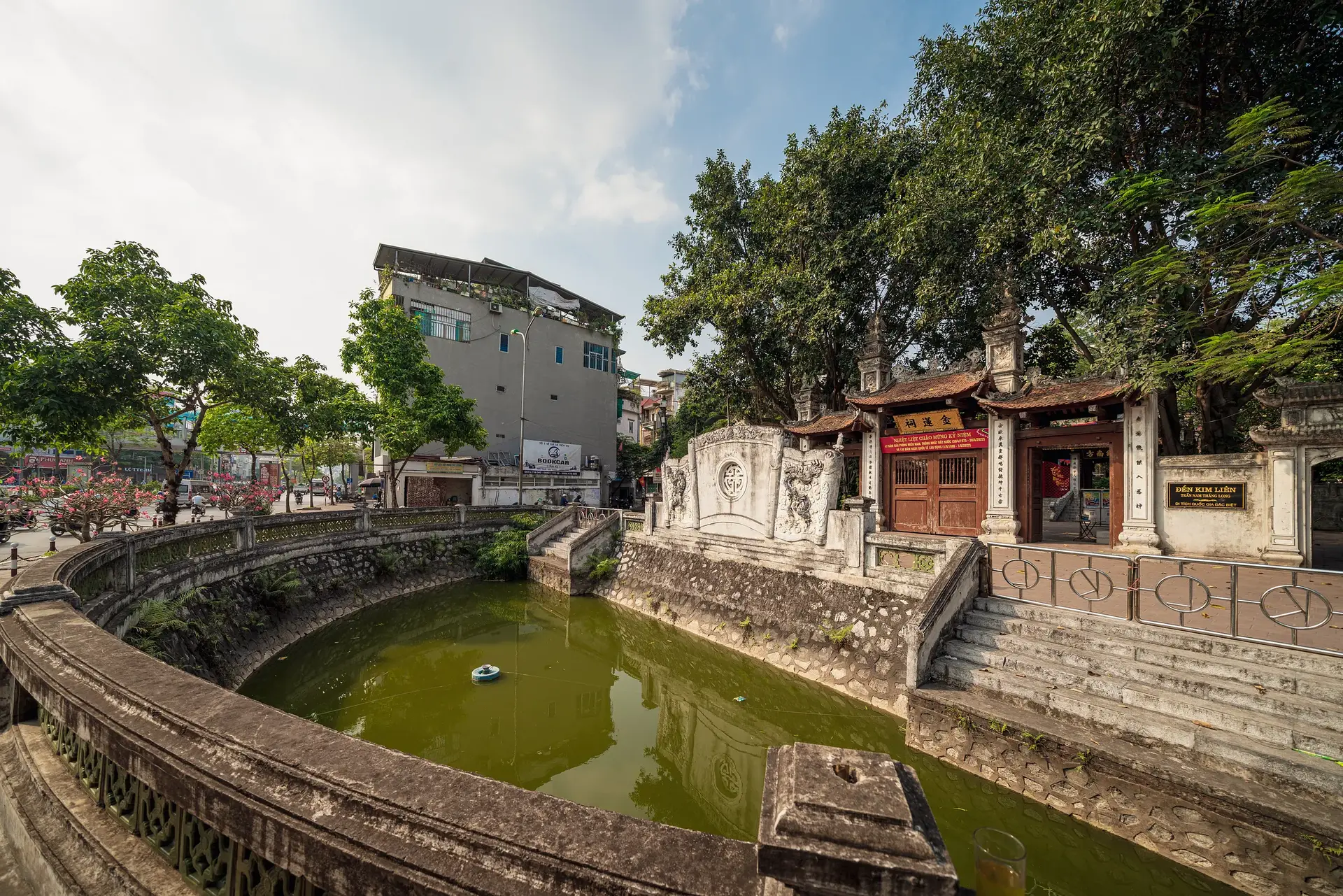
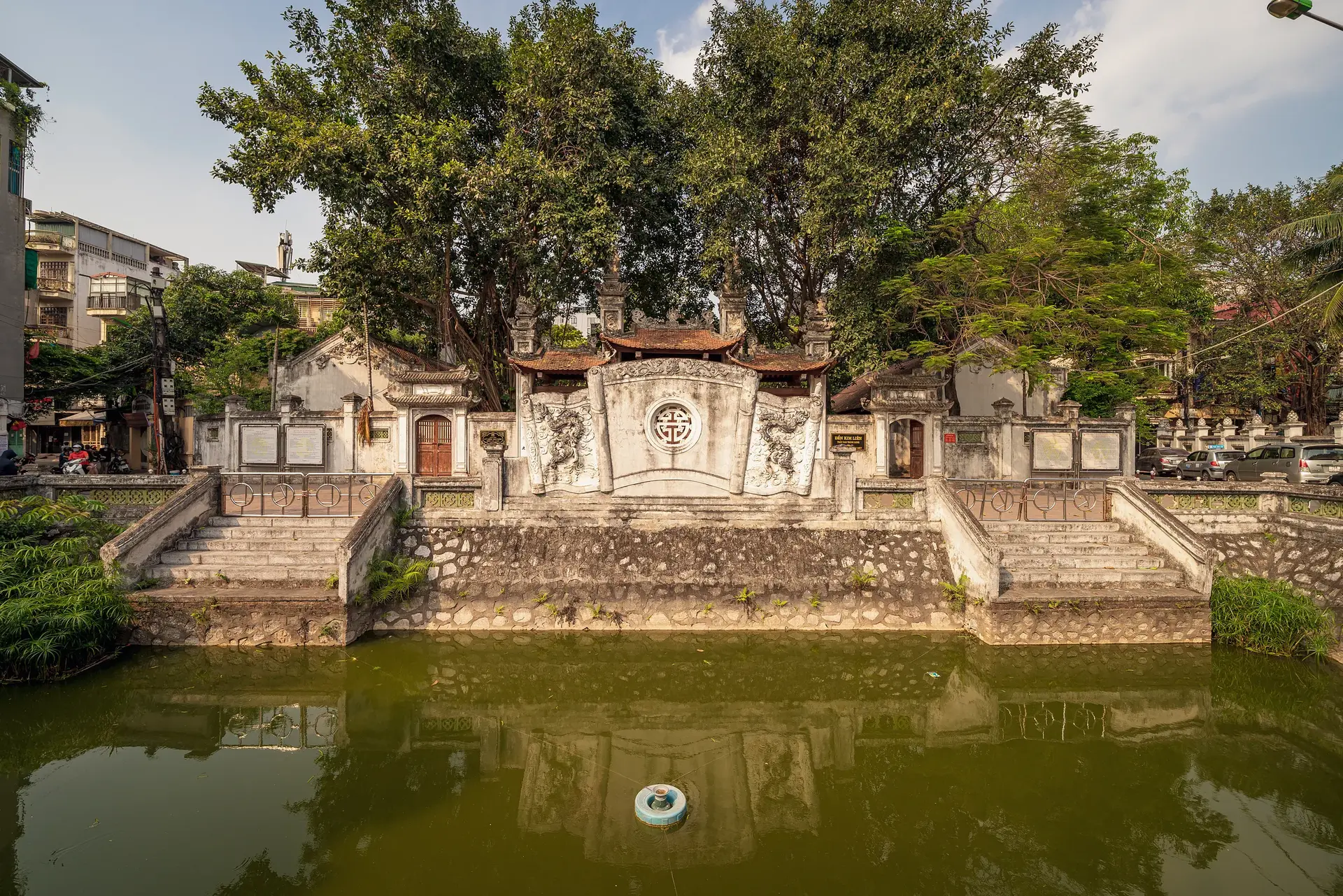
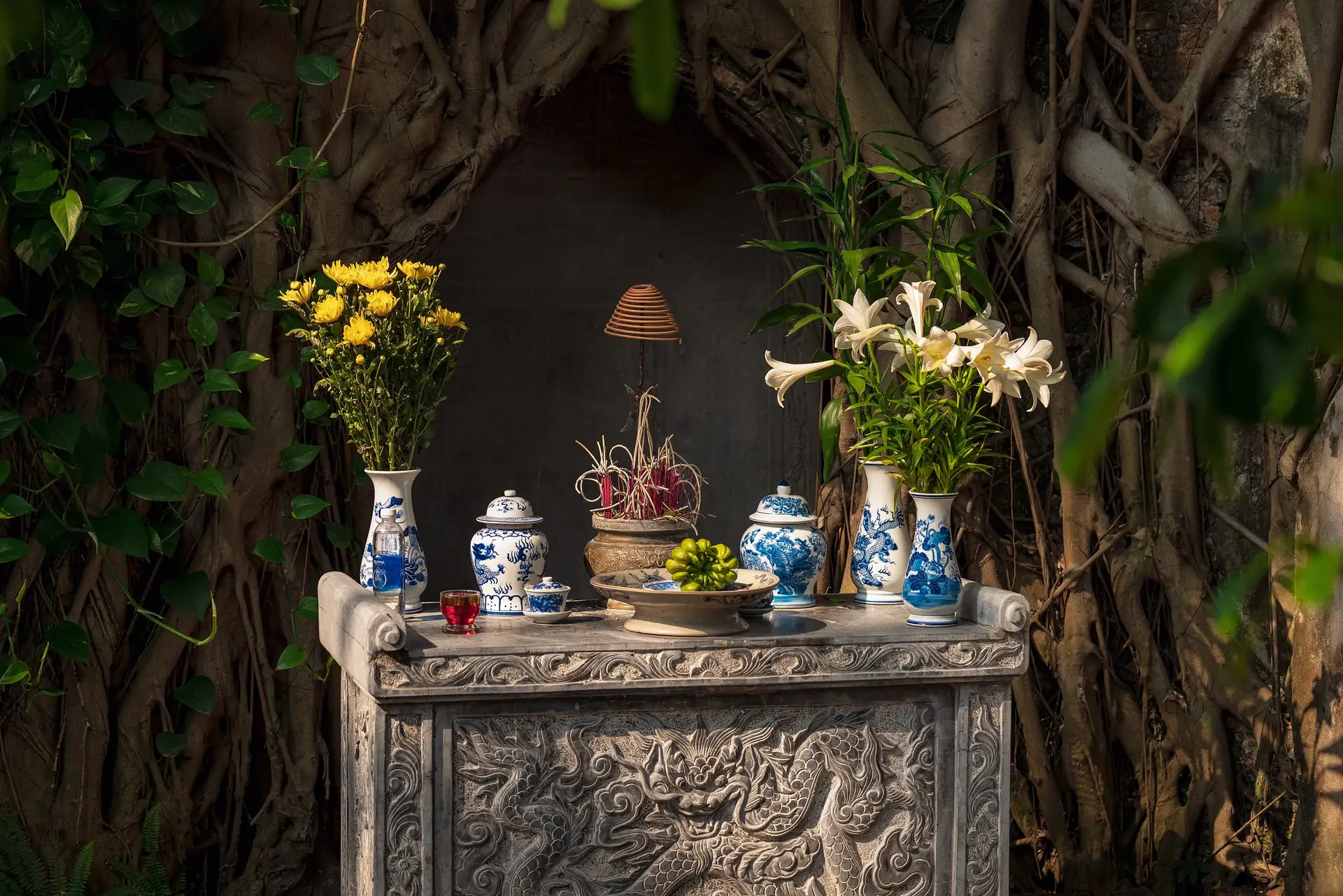
The most important relic of the temple is the stone stele "Cao Son Dai Vuong, the god of compassion" composed in 1510. Besides, there is a system of 39 ordination paths for the god Cao Son Dai Vuong which was built from the Hau Le dynasty to the Nguyen dynasty.
The Temple of the Elephant Guards the West
Residing in the west of the capital is Voi Phuc Temple hidden under the green foliage in Thu Le Park. The god is worshipped as Prince Linh Lang, originating from the son of the Dragon King who was born as the son of a concubine named Hao Niang of King Ly Thanh Tong. In the 11th century, the god was instrumental in helping King Ly Thanh Tong fight the Song enemy. To commemorate the merits of the god, the king ordered the people to build the Voi Phuc Temple; The name comes from two stone elephant statues kneeling in front of the temple gate.
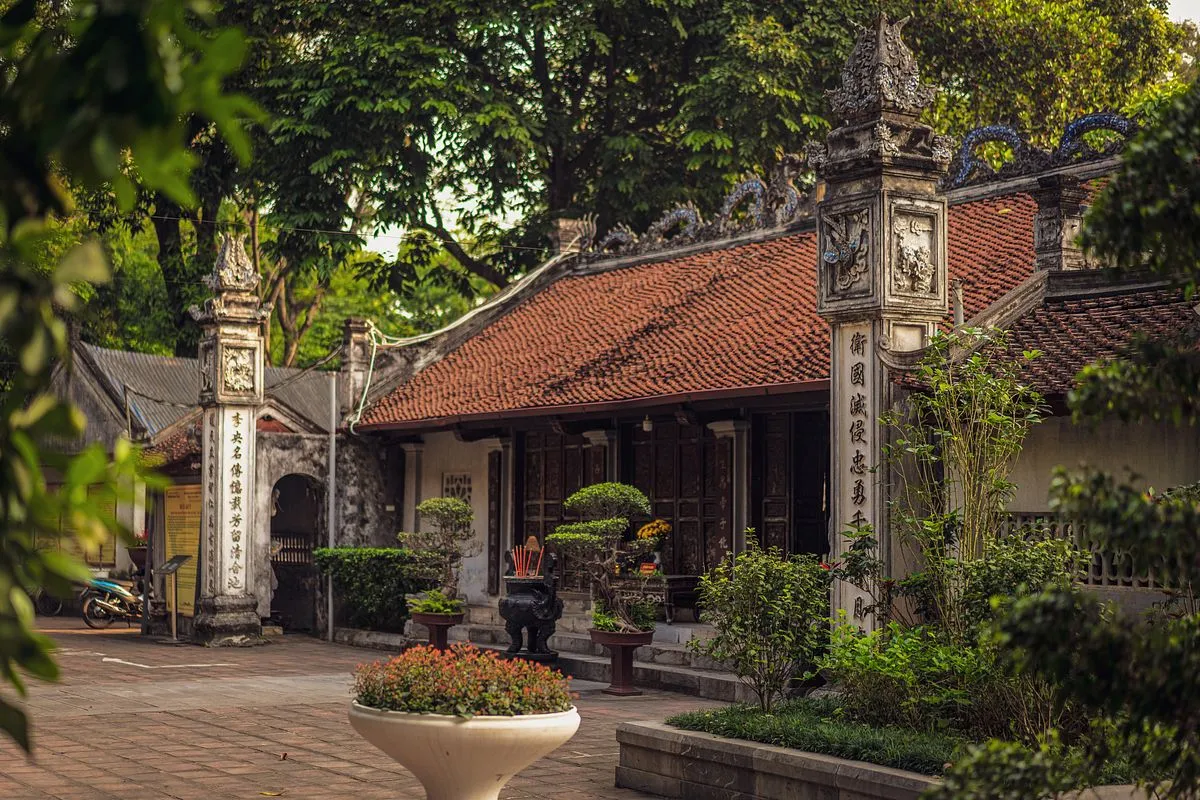
The roof of the Elephant Costume Temple has the same traditional architecture as other ancient temples — the tail of the temple roof is curved, embellished with carvings of mascots such as dragons, lions, phoenixes, etc.
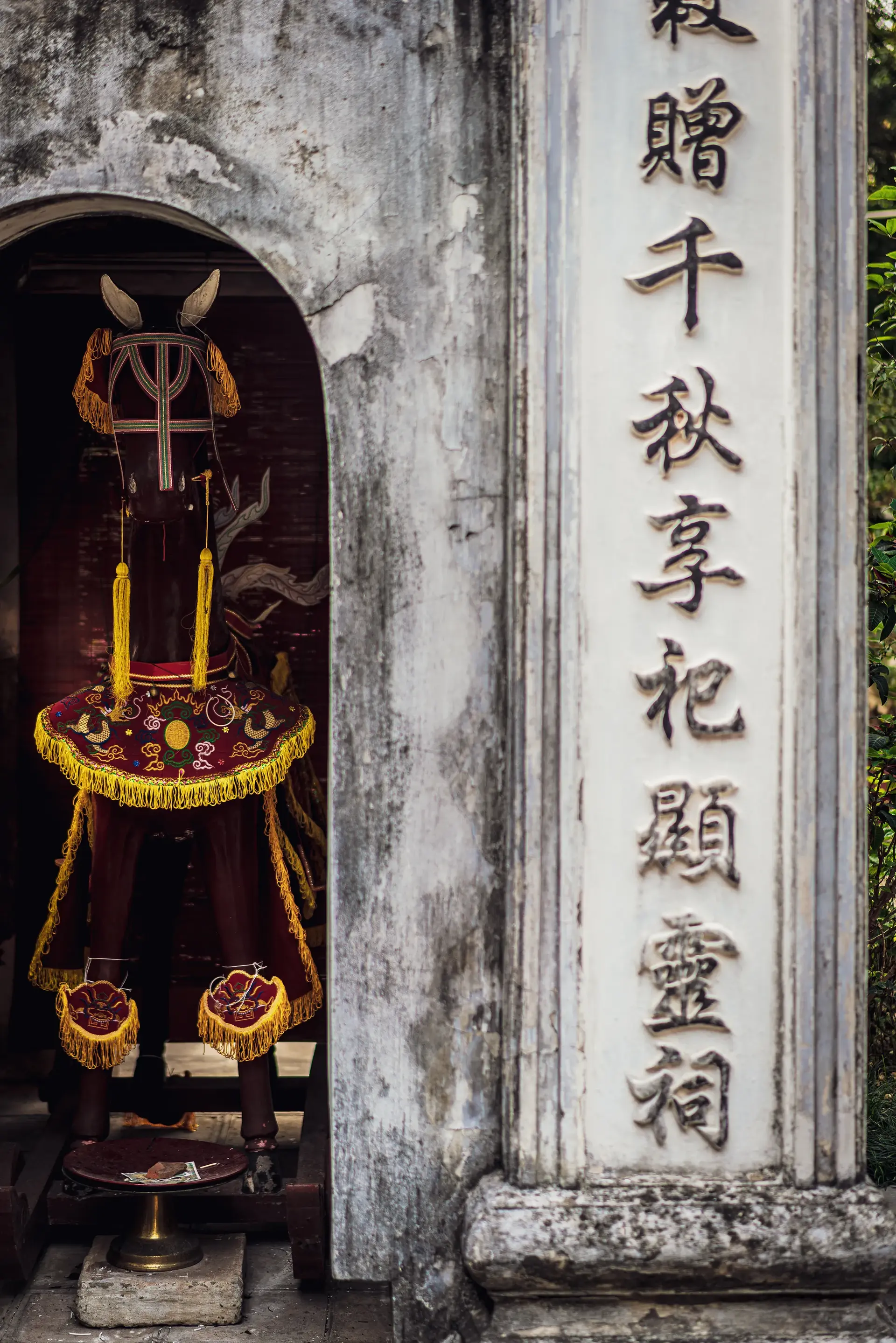
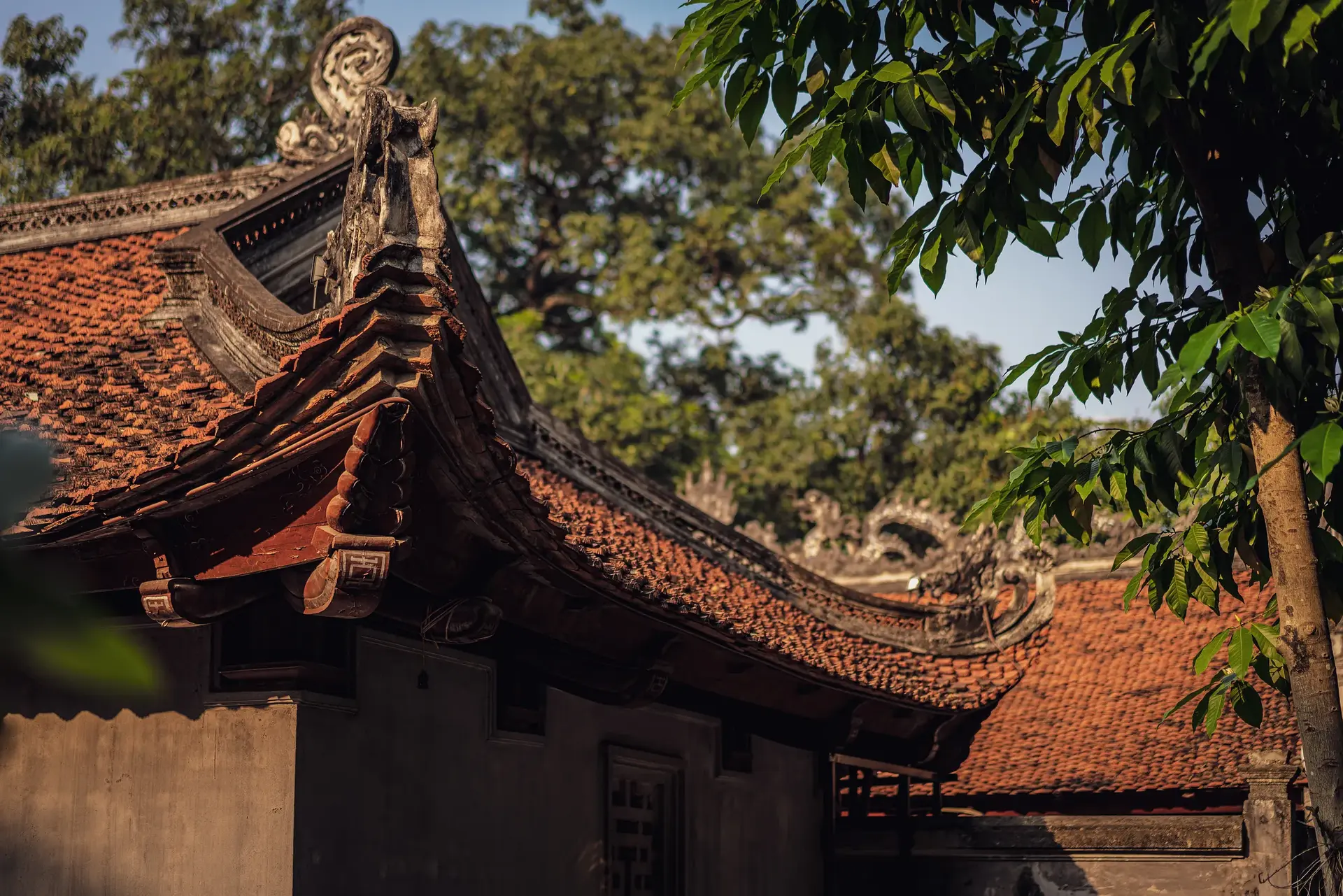
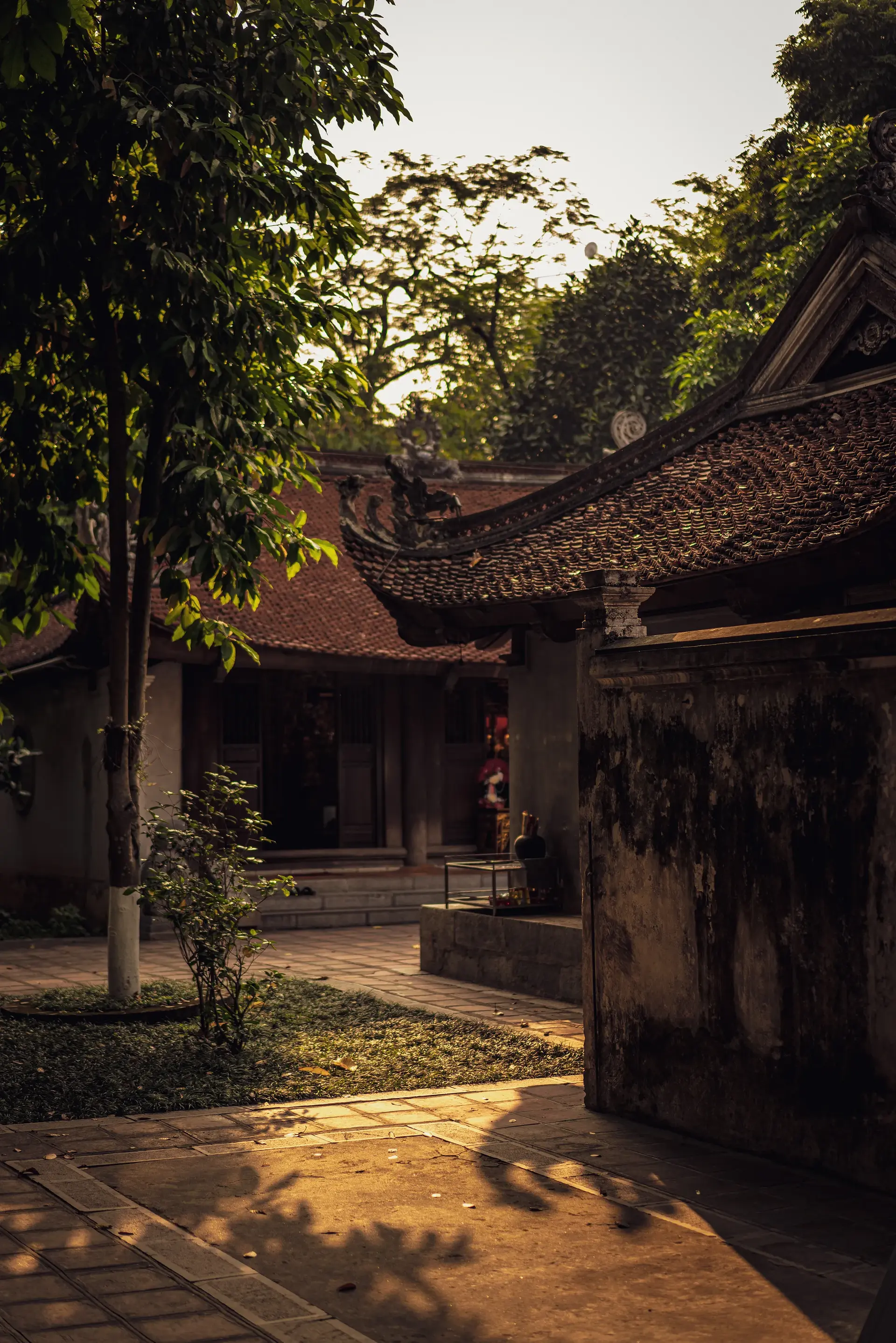
Quan Thanh Temple holds the North
Located next to West Lake, Quan Thanh Temple is a temple with the task of guarding the North. This is a place of worship for Huyen Thien Tran Vu, an important god in Taoism, symbolizing the North Star.
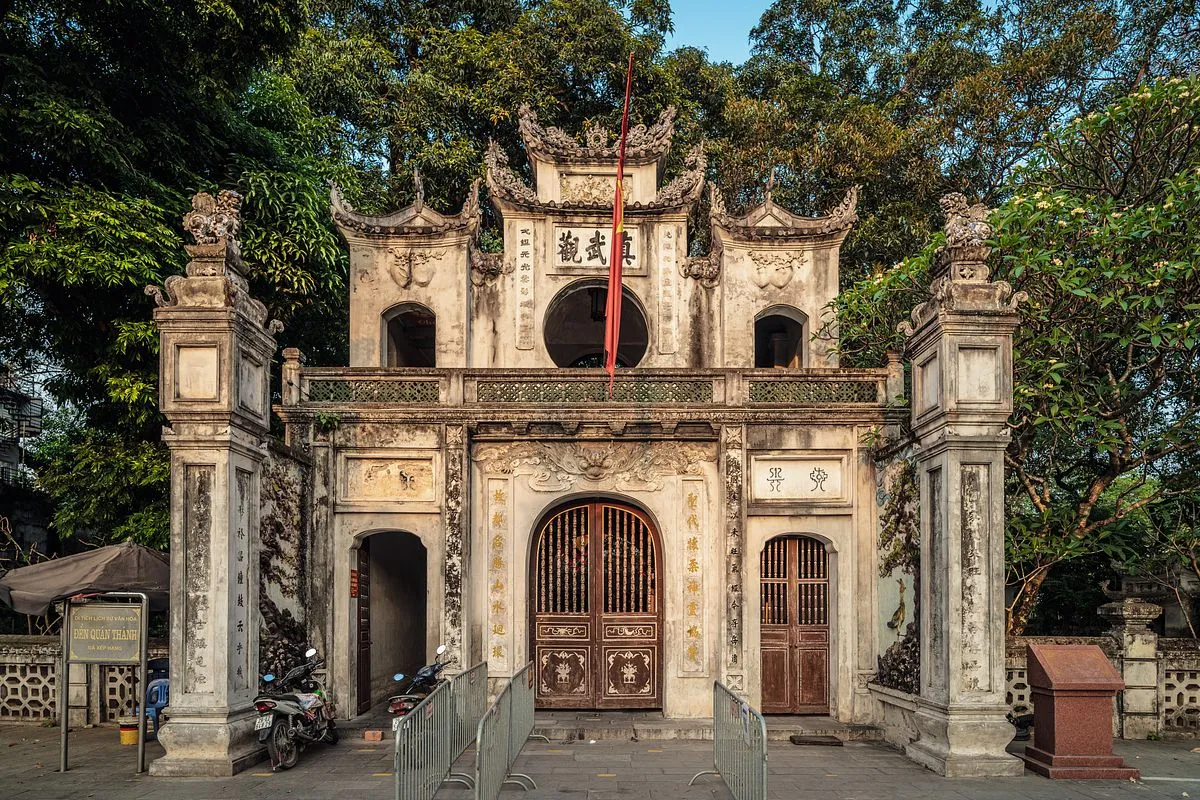
Legend has it that in the old days, there was a nine-tailed fox that used to sow disaster for the people. The god Tran Vu had to descend on earth to destroy the fox to re-establish peace. The land where the fox carcasses were buried suddenly turned into a low-lying area and became today's West Lake; This is also the reason why the lake is also called the "Fox Corps" lagoon.
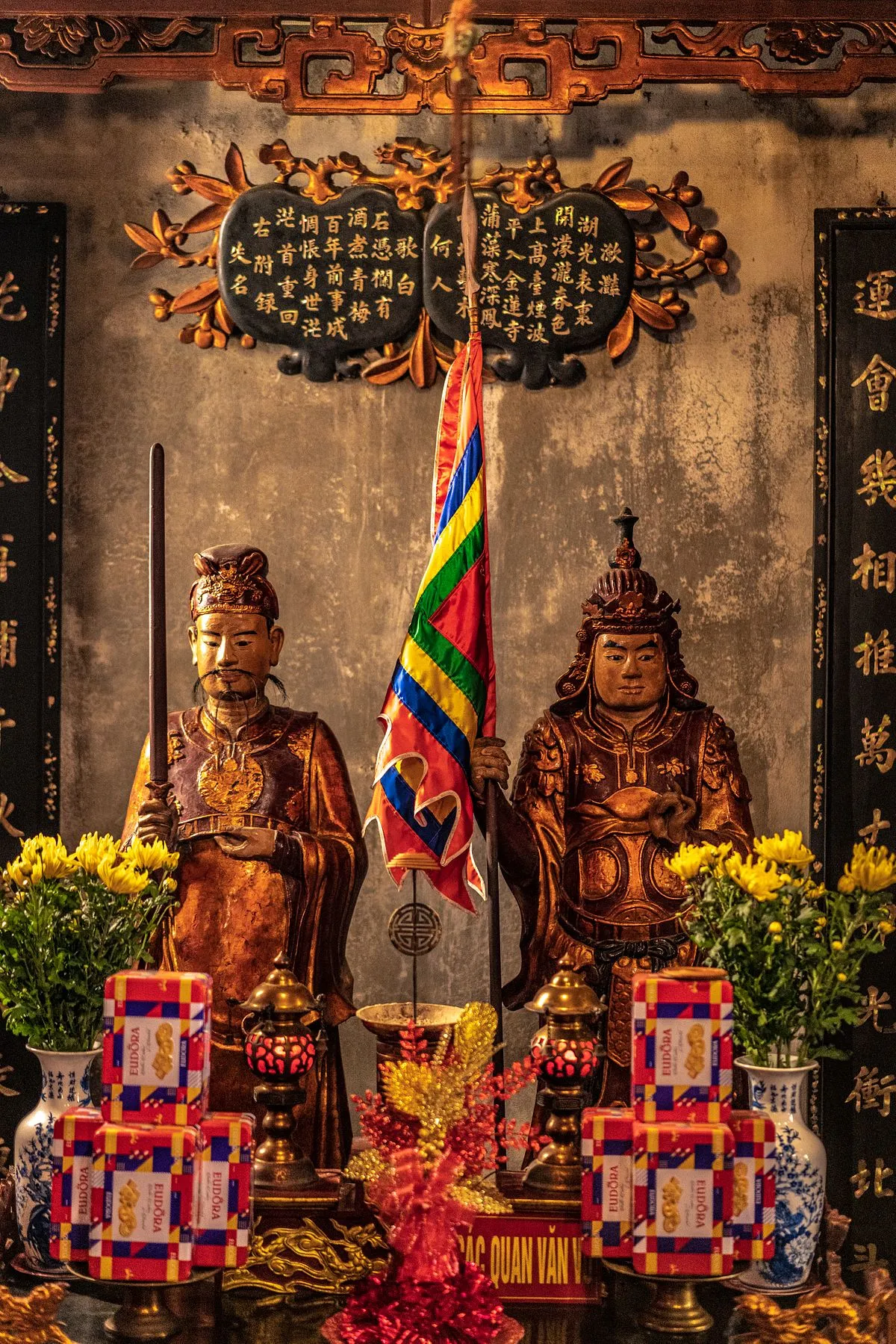
The temple now houses many ancient works of art, including 40 Tang poems carved in woodblock dating from the 7th century. There is also a bronze relief depicting the scene of the Three Realms: Heaven, Earth, and Water.
The soul of the temple is the bronze statue of Huyen Thien Tran Vu that is 3.96 meters high and weighs 4 tons placed at the main altar. According to legend, this statue clearly shows the Taoist god when he was enlightened.
As the residence of a martial god with unparalleled strength, perhaps it is not surprising that the temple also has another function as a dojo. Martial arts students often come here to practice in the afternoon.
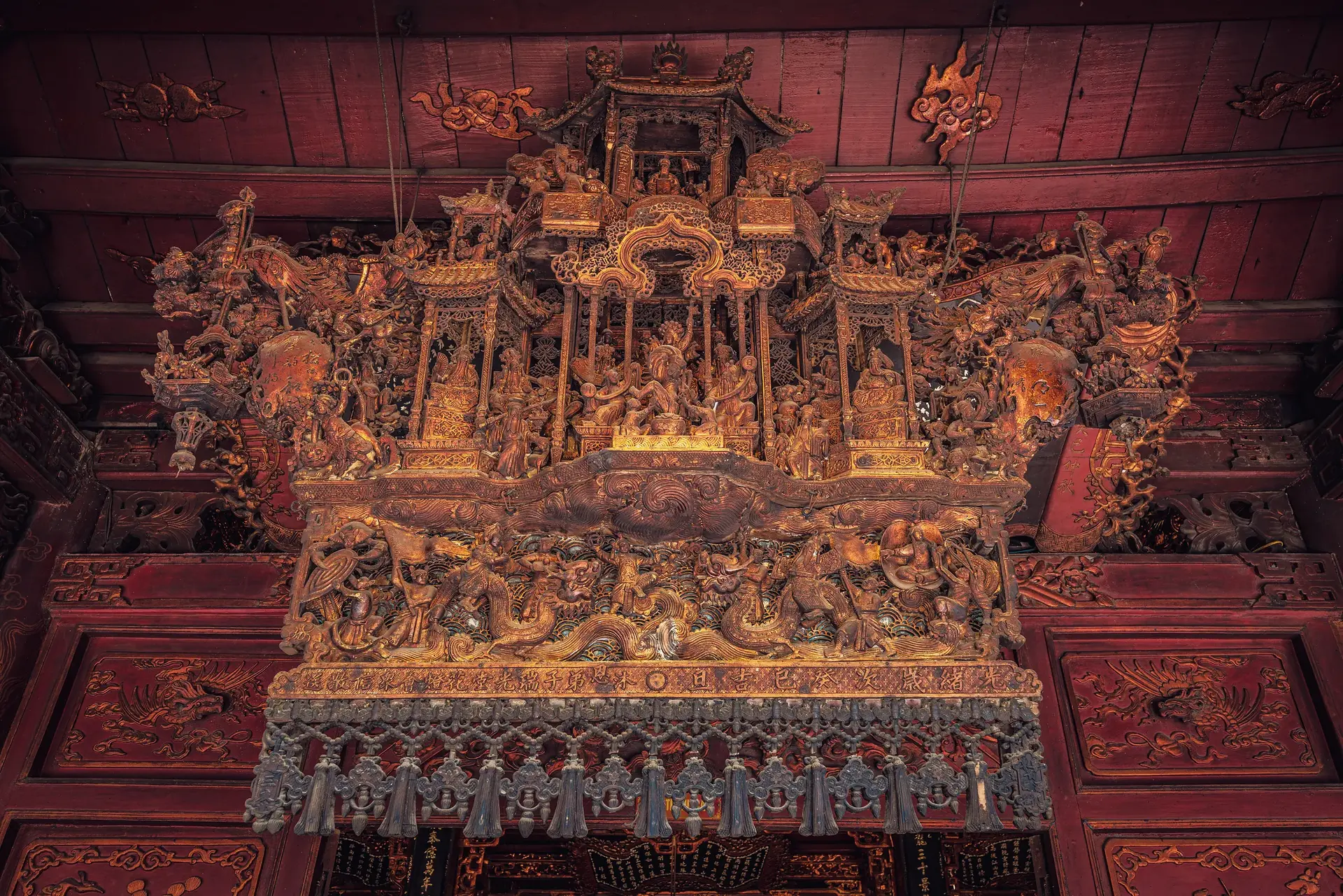
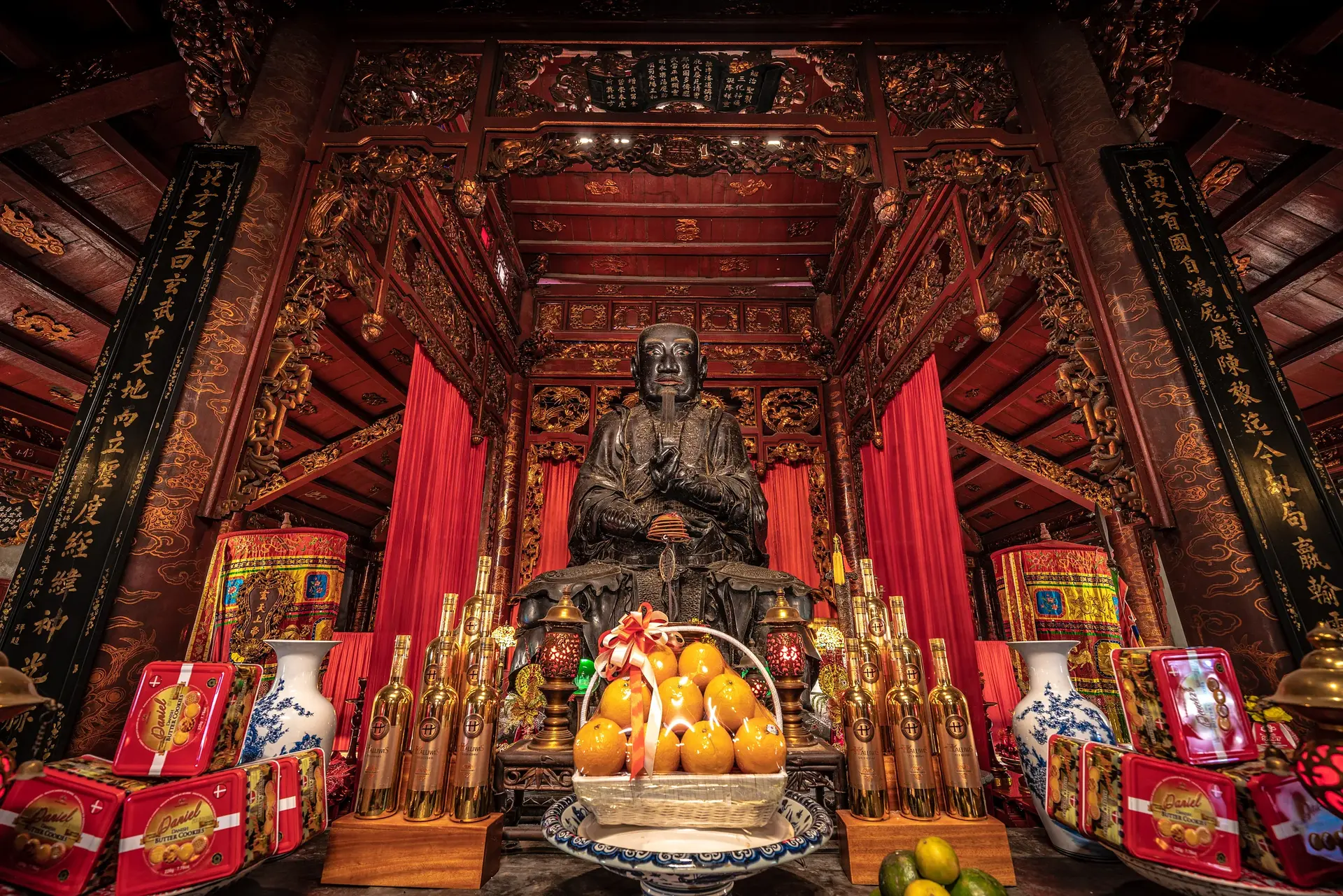
Thousands of years have passed since King Ly Thai To issued a decree to move the capital to Thang Long, but the cultural and historical significance of Tu Tran is still intact. Strengthened by the words of the people, the four temples continue to guard the capital against the changes of time.
Photo: Alberto Prieto
According to Saigoneer
